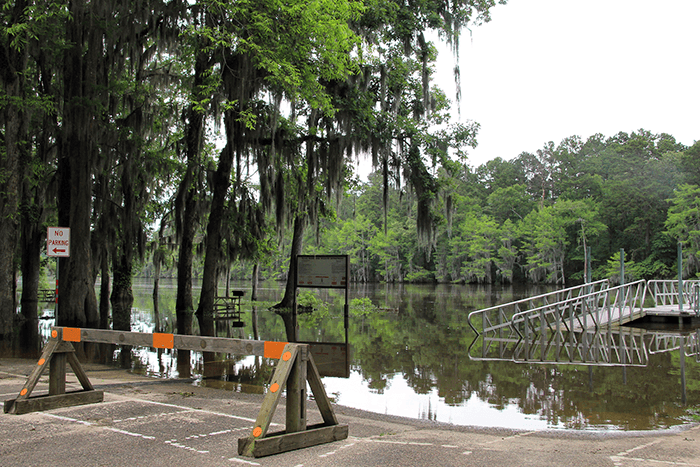Diagnosing human-induced dynamic and thermodynamic drivers of extreme rainfall
How, and by how much, climate change is affecting extreme rainfall events is a subject of great societal importance. In a new study to be published in the Journal of Climate, reseearchers from CIRES and the ESRL Physical Sciences Laboratory apply modeling and statistical tools to evaluate the causes for record-setting rains in May 2015 over the southern Great Plains. Texas and Oklahoma each reported monthly rainfall that far exceeded their prior wettest May, and in fact exceeded the prior wettest month since at least 1895. The event occurred during an El Niño event, and the researchers use historical data and model experiments to address how this event was important for the rains, and further how climate change may have altered the efficacy of El Niño impacts on Great Plains US rainfall extremes. The principal finding is that El Niño was much more important for the occurrence of the May 2015 rains that was the occurrence of human-induced climate change to date, and that climate change had not altered the manner by which El Niño events affect US springtime rainfall events, at this time. Important conclusions include:
- El Niño was a virtually necessary condition for the severity of the May 2015 rains. The event had a return period of at least 400 years; the prior record rainfall was estimated to have been a 100-year event.
- The 2015 extreme rainfall event was made neither more intense nor more likely due to human-induced climate change. This is true whether the climate change effect is independent of year-to-year tropical Pacific sea surface temperatures s or is conditioned on El Niño.
- Looking forward, the probability of an El Niño-related extreme rainfall event of the severity of the May 2015 event increases by the latter half of the 21st Century. This is principally due to thermodynamic driving — no material change is found to occur in El Niño-related dynamics including its atmospheric teleconnection.
- The increased severity of Texas/Oklahoma May rainfall events in the future is, however, much less than implied by simple considerations of increased atmospheric precipitable water vapor alone. Other thermodynamic factors are identified that act in opposition to the increase in atmospheric water vapor thereby reducing effectiveness of overall thermodynamic driving of extreme rainfall over Texas/Oklahoma.
In 2016, the National Academy of Sciences, among their recommendations to improve robustness in event attribution, highlighted the need to better understand the effects of both dynamics and thermodynamics in the development of extreme events, and to improve diagnosis of the interplay between natural variability and climate change. This study addresses both of these recommendations. It examines how El Niño-related dynamics may have changed in a warming world, in a manner that could have altered the intensity and likelihood of an extreme rainfall event. It also presents a formalism for assessing the role of dynamic and thermodynamic factors, and how they interact to affect an extreme event.
Posted: November 20, 2017

Authors of Diagnosing human-induced dynamic and thermodynamic drivers of extreme rainfall are: Linyin Cheng, Martin Hoerling, Lesley Smith, and John Eischeid of the ESRL Physical Sciences Laboratory.